Caring for your vine
Historical evidence of viticulture in Britain goes back as far as the Roman invasion of 43AD.
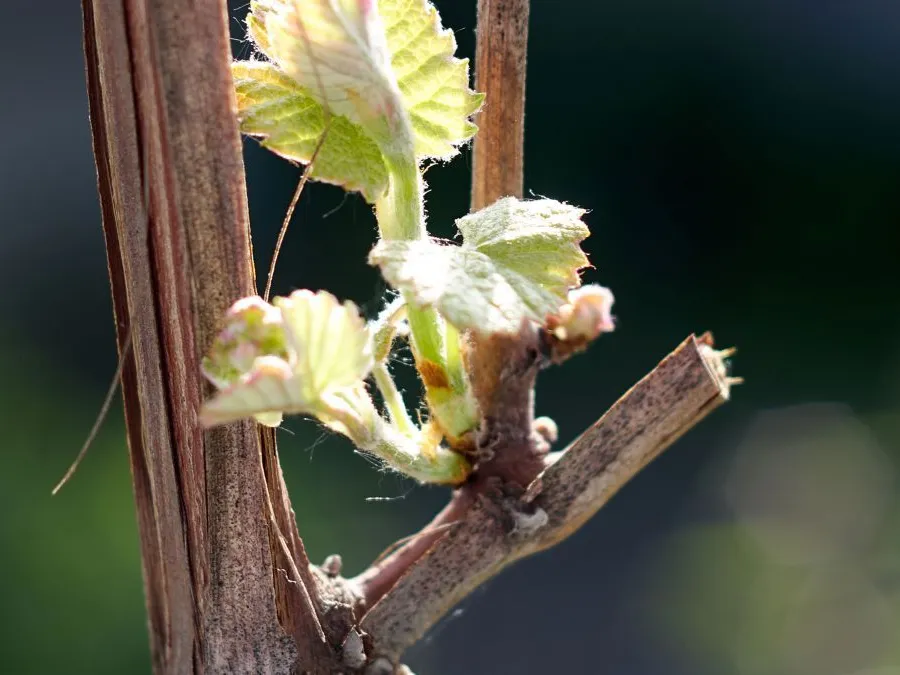
The progression of British viticulture, mostly the duty of Benedictine Monasteries, largely ceased after the reformation under Henry VIII.
More evidence of viticulture is found in the Doomsday Book, where 42 vineyards were recorded throughout Britain during Norman rule.
Trade agreements between neighbouring France made it easier to import cheaper continental wines. During Tudor rule, beer was the drink of choice for working classes, so farmers opted to grow in-demand wheat instead of the more challenging vines.
UK wine production today
Modern English viticulture began in the 1950s, and there are now more than 500 commercial vineyards in the UK. Llanerch - the first modern day Welsh vineyard - began when the vines were planted in 1986.
Cool climate vine selection, advancements in winemaking practices and the implementation of labelling legislation have all contributed to better quality wine production in Wales and England. Our wines have never tasted better and with British wines increasingly beating the French in their own sparkling wine blind taste competitions, it’s no wonder some of the best vineyards have been snapped up in recent years by French wine producers. Eager to future-proof their businesses from climate change, and perhaps stiff competition, perhaps!
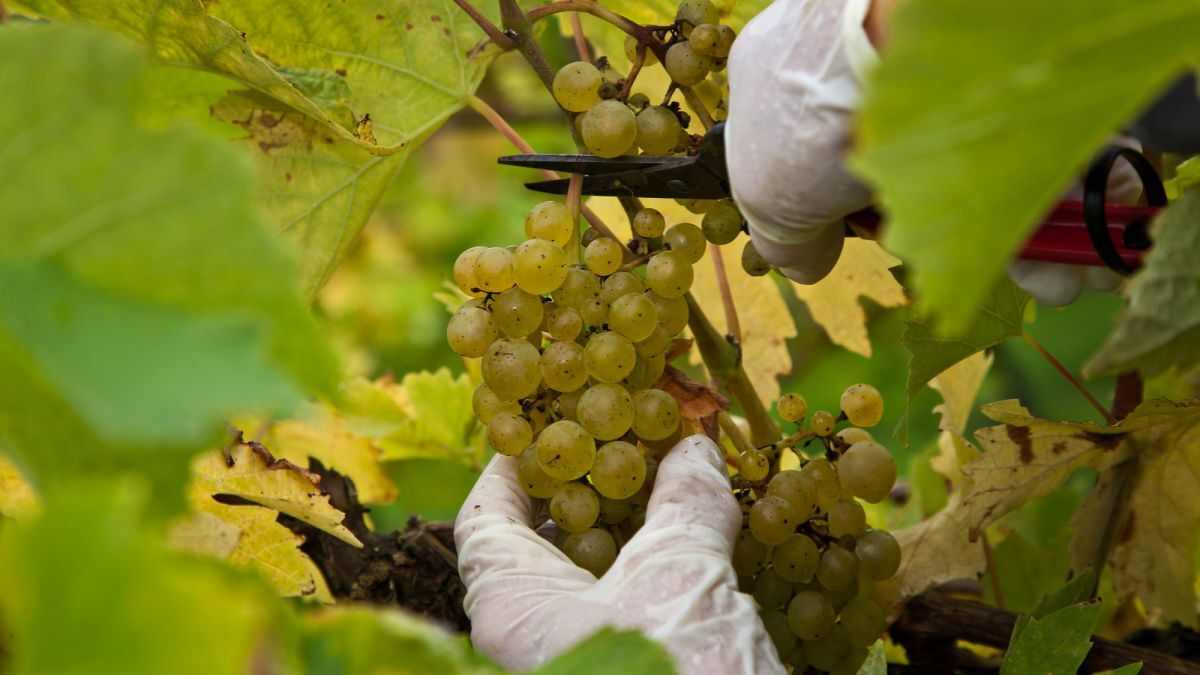
Planting
Grape vines are best planted after spring, to ensure that any new growth is not damaged by frost. Grapevines prefer a soil with good drainage, ideally on a slope and with slightly rocky or sandy soil with a pH between 6.5-6.8.
Grapevines can be grown in general purpose potting containers of about 30-38cm (12-15in) in diameter and depth. Loam-based potting compost is best.
- Plant in a sheltered site with full sun, ideally against a south or south/west-facing wall.
- Place small stones around the base of the vine to suppress weeds and help maintain moisture.
- Dig a hole twice the size of the tangled roots. Tease out the roots and spread them evenly around the planting hole before filling with soil.
- Plant the vine to the same depth that it was in the pot.
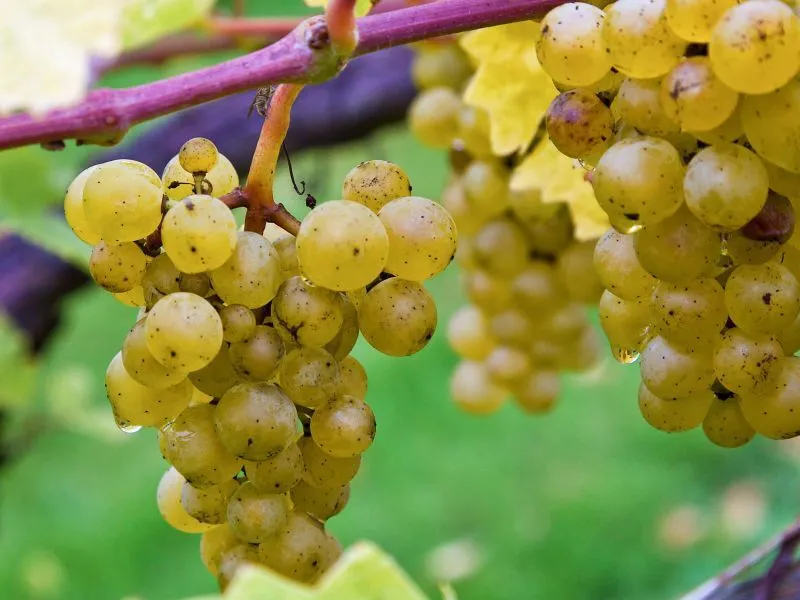
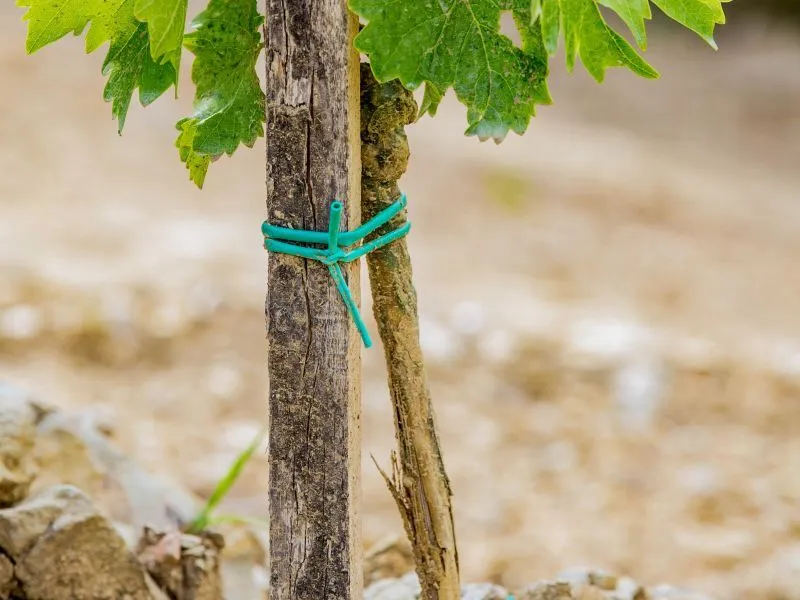
Growing
Prepare a trellis for your grapevines. If you are not planting your grapes along a fence or other structure, construct or buy a trellis for them to grow along. Don’t use a single stake (as you might for tomato plants) as this won’t provide enough support for your vines once they start growing.
Water your newly planted vines during dry spells. Established vines grown outside in the UK will require little watering as they are deep rooted. Vines grown under cover, and in containers, will need regular watering and will also benefit from a high-potash liquid feed.
Apply a mulch in late winter. Avoid using manure as that will encourage the roots to grow towards the surface and may also lead to excessive vegetative growth.
Maintenance
Major pruning should take place in winter when the vine is dormant. For the first two years, remove all flowers to prevent over-cropping. To ensure large ripe grapes, allow only one bunch per fruiting spur (branch).
When the grapes start to ripen, remove some of the leaves that are shading the fruit so that the sun can reach them. Ventilate your greenhouse or conservatory on warm sunny days. Grape vines grown outside do not need any help with pollination, as the wind does this. Vines grown in the greenhouse will need their branches gently swayed to release the pollen. In order to start flowering, grapes require temperatures below 5ºC for a period of 4-6 weeks. This is easily achieved outside.
If your vine is container grown, move the container outside for a few weeks during early winter. If your grapevine is in a greenhouse, open all the vents during December.
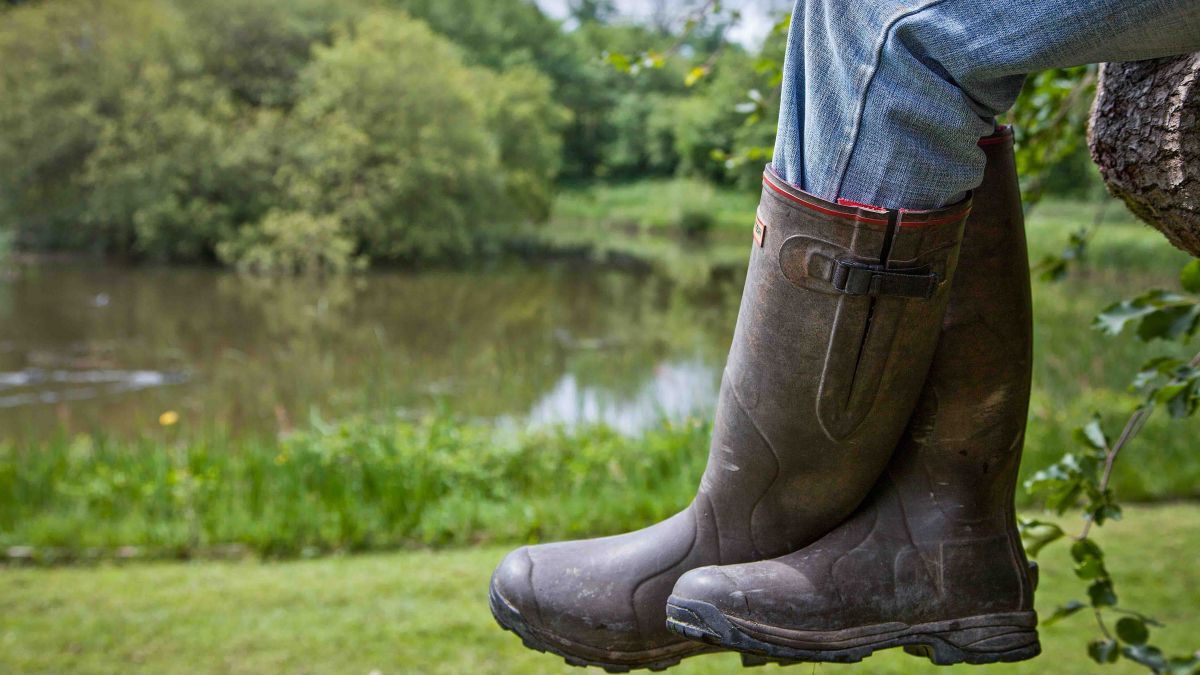
Harvesting
Harvest your vines when the grape bunches are sweet to taste. This ensures that there are enough sugars for the yeast to convert into alcohol. The grape bunches will be small and compact - much smaller than edible grapes - with each grape reaching approximately the size of a small marble. However, they will be packed full of flavour.
At Llanerch, our grapes ripen from late September to late October, depending on the variety and location in the vineyard. The grapes may start to lose some of their colour shrink, or start to turn black (like a raisin). These grapes are fine to include, however avoid any grapes that may have formed mould as these may taint your wine.
Harvest by holding the grape bunch and cutting the bunch off by the stem using a pair of sharp, clean secateurs. Collect in a clean bucket, and if processing into wine press the grapes and start the wine making process immediately.
If you have sprayed any chemicals or pesticides on your vines, ensure that you have followed the instructions on the packet so that the product is safe for human consumption and make sure to check and follow the harvest interval period.
Good luck, and enjoy your home-grown wine!

